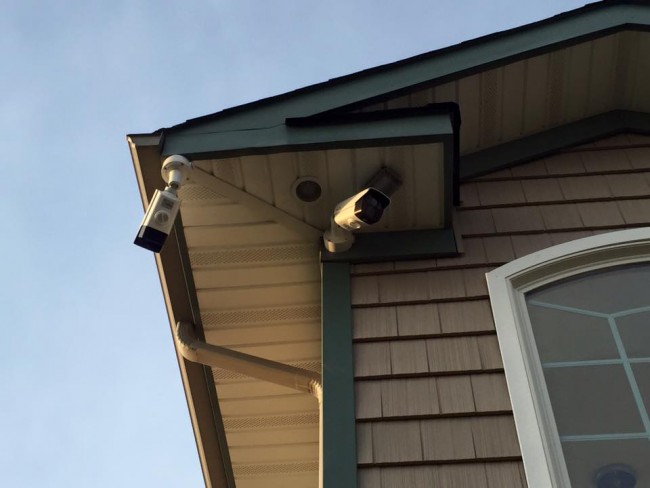
Today, installing residential surveillance equipment is an increasingly popular facet of home security systems. While some might feel like having cameras placed around their home is going a little overboard, there’s a reason why commercial businesses, government buildings, and ATMs are fitted with security cameras: They not only work, but also provide a powerful deterrent. Of course, residential surveillance equipment is not for everyone, and those who do decide to install it will have to choose between many levels of surveillance coverage. If you have considered installing cameras in and/or around your home, here are a few facts about these systems that might make finding the right system an easier job.
Conventional Wired Residential Surveillance Equipment
Wired residential surveillance equipment is a good choice for those who want a balance of performance and affordability. Though these systems may require you to drill a few holes during installation, the equipment is relatively inexpensive. Once wired residential surveillance equipment is in place, it is nearly maintenance free; many of the cameras used in these systems are suitable for both indoor and outdoor installation. While older systems require changing tapes, newer DVR systems not only capture all your images digitally, but can be viewed online, meaning that you can keep an eye on things even when you are away from your home. Typically, these systems are very energy efficient, so there is little worry of significantly increased utility bills. A common option for wired systems is to have the footage stored on a physical Digital Video Recorder or DVR. These systems are called Closed-Circuit Television or CCTV. CCTV installation costs are more expensive than wireless system costs, but they work independently of the Internet and are thus are impervious to wireless Internet blackouts.
Wireless Surveillance Equipment
As with many aspects of the American home, the convenience of wireless surveillance equipment is quickly gaining popularity over older residential surveillance equipment set-ups. Though the ease of installation and the versatility that comes with wireless surveillance equipment is very attractive, it should be noted that these systems may not perform as well as a conventional, wire-connected surveillance system. Obstructions of many varieties and long distances can dull the signal of wireless camera transmitters, and in some cases, wireless surveillance equipment is simply not powerful enough to effectively capture and transmit video images. Additionally, the lack of wiring makes it necessary to provide each camera with its own power source (though this is often provided when the equipment is purchased).
Unless you have gotten professional advice from an experienced installer, it is generally best to purchase and install wireless surveillance equipment one piece at a time. This will reduce the chances of you spending a lot of money on a system that is too fraught with obstructions and low-signals to operate properly.
Ready to start your surveillance system?
Find ProsSelf-Contained Residential Surveillance Equipment
While video camera and monitoring systems can give your entire house visual coverage, many homeowners simply want to keep an eye on a single room or only want surveillance in certain specific situations. Like the “nanny-cams” you’ve seen on TV, self-contained residential surveillance equipment is a no-muss, no-fuss option than many find appealing. Made to look like clocks, lamps, stuffed animals, smoke detectors, tote bags, and many other common household items, these battery powered, self-contained units can record the action in a single space. They are easy to use and require no real installation, making them ideal for just about anyone who wants to simply and effectively keep tabs on any room of the house.
 Home Alarm Installation: Keep your Family and Property Safe
Home Alarm Installation: Keep your Family and Property Safe  Video Security Cameras: Why Everyone Should Have Them
Video Security Cameras: Why Everyone Should Have Them  5 Home Security Essentials
5 Home Security Essentials  How to Choose the Best Smart Smoke Alarm
How to Choose the Best Smart Smoke Alarm  11 Home Security and Safety Tips
11 Home Security and Safety Tips 

Are You Familiar With This Topic? Share Your Experience.